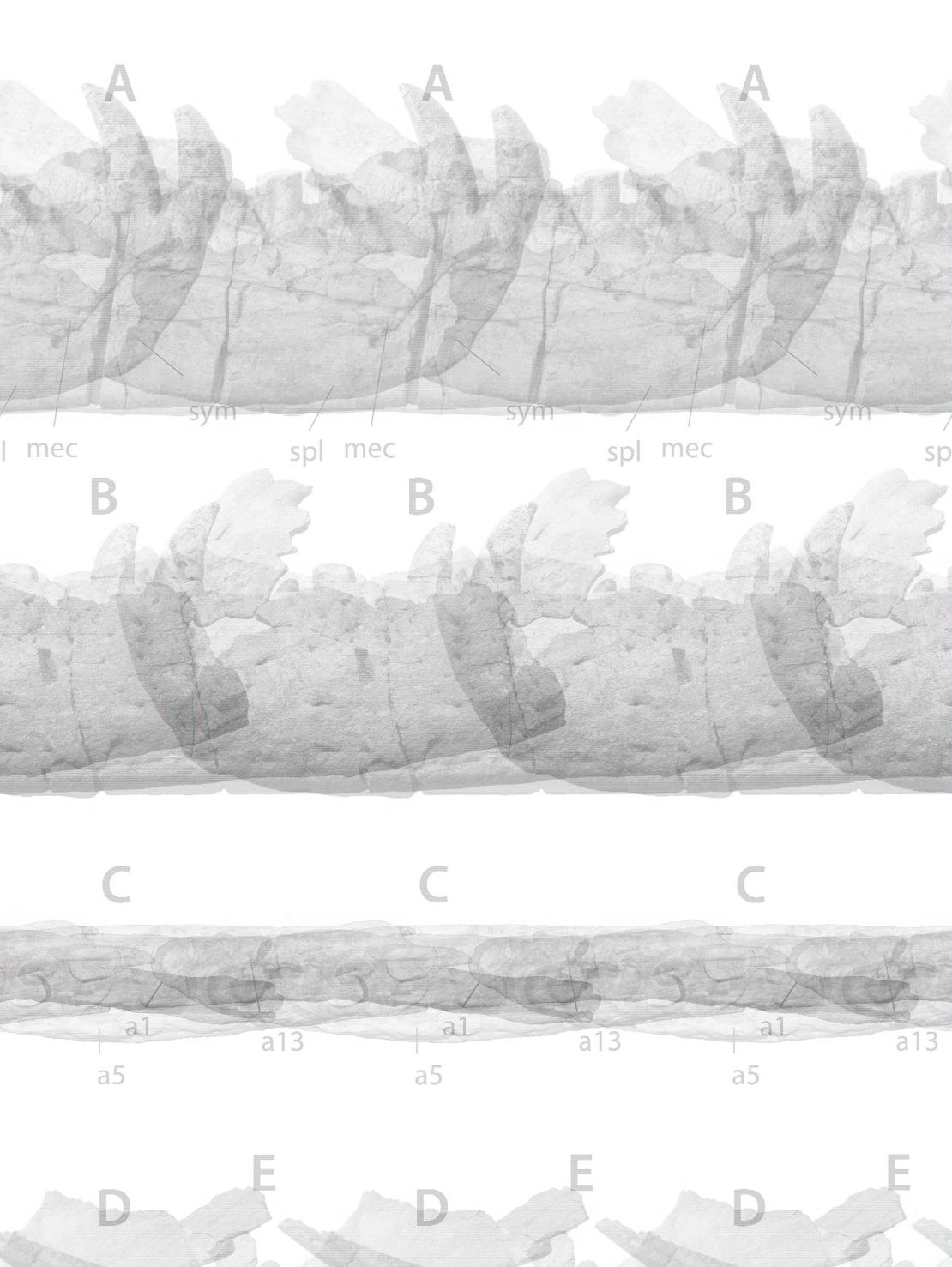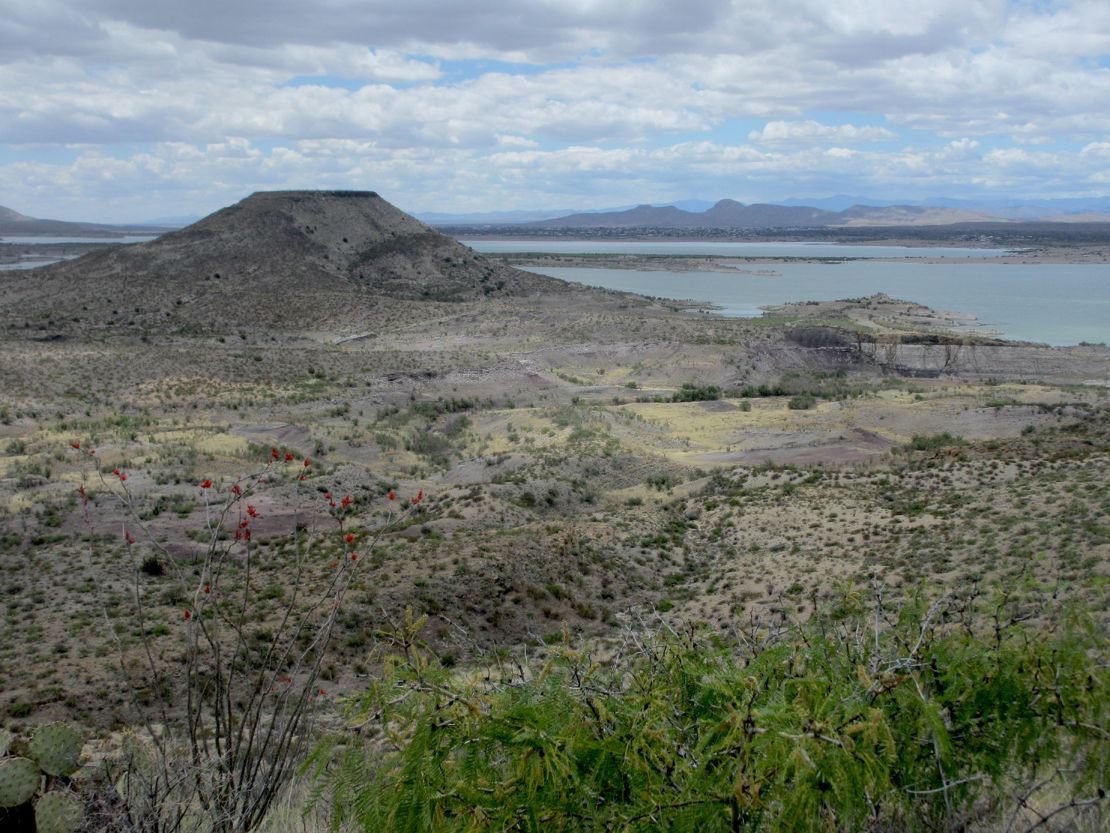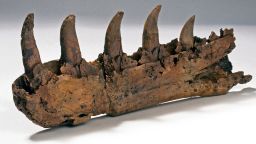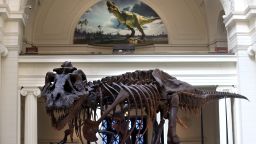Sign up for CNN’s Wonder Theory science newsletter. Explore the universe with news on fascinating discoveries, scientific advancements and more.
A formerly unknown relative of the most iconic of all dinosaurs, Tyrannosaurus rex, has been newly identified, according to a study released Thursday. The revelation adds a new clue that could help paleontologists unravel another step in the evolutionary chain that ended with the massive predatory tyrannosaur, T. rex.
Called Tyrannosaurus mcraeensis, the creature likely roamed Earth up to 7 million years before T. rex emerged. The bones have been dated to 72 million to 73 million years old during the late Campanian-early Maastrichtian Period.
But Tyrannosaurus mcraeensis’ bones were discovered decades before the creature officially got its scientific name. About one-quarter of its fossilized skull was found over the course of the 1980s and early ’90s in an area now known as Elephant Butte, New Mexico. Because of the size of the specimens, the bones were originally categorized by the New Mexico Museum of Natural History & Science as T. rex, which grew up to 39 feet (12 meters) long and 10 tons in weight.
T. rex vs. its relative
There were two big differences between T. rex and T. mcraeensis.
“The lower jaw in a Tyrannosaurus rex is actually quite robust. Our jaw is obviously big and toothy, but it’s more slender than what we normally see in a Tyrannosaurus rex,” said Anthony R. Fiorillo, coauthor of the study published Thursday in the journal Scientific Reports. The robust jaw of T. rex meant it “could do whatever it wanted. A more slender jaw, even with the big teeth, means that it would have less bite force.”

The other big difference was that, unlike T. rex, T. mcraeensis didn’t have a prominent ridge over its eyes. Scientists believe T. rex’s ridge was used to help attract mates, much like antlers on deer or elk, said Fiorillo, who is executive director of the New Mexico Museum of Natural History & Science in Albuquerque. In T. mcraeensis, the ridge is much more subtle.
Why go large?
Massive tyrannosaurs probably emerged as an evolutionary adaptation to the availability of large herbivores, the authors wrote. However, exactly why giant plant-eating dinosaurs evolved is still an unexplained mystery, according to the study.
Fiorillo emphasized that it’s a “highly speculative” idea for now, but he added that, unlike the pygmy tyrannosaur found in the Arctic — called Nanuqsaurus hoglundi — T. mcraeensis probably didn’t experience dramatic shifts in temperature and light in southern North America so it was able to continue to grow. Arctic conditions may have played a role in N. hoglundi’s distinctly diminutive size, but in general other tyrannosaurids from the same time period were much smaller than T. mcraeensis.
The research team will now return to the rock formation where the specimen was unearthed to see whether they can find more bones.
“Then, because it’s so big, we need to actually shift some of our investigation to try to understand the paleoecology and environment in which this animal lived so we can begin to understand what was it about New Mexico that was so special that this animal’s adaptation to life was to get big,” Fiorillo said.
A tyrannosaur sleuth
When the lower jaw was first found, there weren’t many T. rex specimens out there, Fiorillo said.
The identity of T. mcraeensis was revealed all these decades later thanks to Sebastian G. Dalman, the study’s first author who is an associate researcher at the museum as well as a paleontological consultant with the Springfield Science Museum in Massachusetts.

While studying the bones starting in 2013, Dalman was the first person to suggest that they “might be something different,” Fiorillo said.
As the largest apex predator of its time, T. rex has had near constant attention from the paleontological community, both professional and amateur, for decades. Fascination with the ferocious giant and outsize roles in popular films such as “King Kong” and “Jurassic Park” have upped the enthusiasm of scientists and amateur fossil hunters alike in their search for more T. rex bones, according to Fiorillo.
“And that improved our sample size,” he said. “That set the table for when Sebastian started to look at our specimen and say, ‘Hey, these don’t actually look the same as the famous Tyrannosaurus rex specimens from places like Montana.’”




